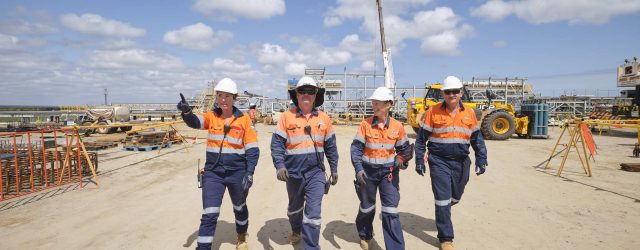Nailing construction productivity – a nation building priority
Posted: 1st September 2023
Posted in: Blog

Posted: 1st September 2023
Posted in: Blog
Construction in Australia is facing a big problem. It is becoming less productive as other costs continue to increase. This should worry all of us because if we don’t fix this issue, we won’t be able to keep up with the demand for housing and infrastructure as our population grows.
Construction’s productivity problem reflects a broader problem in the economy. The Productivity Commission highlights that Australia is experiencing the worst productivity growth in 60 years. If we don’t change things, our living standards will drop, and we’ll have to work longer and earn less.
As one of the largest centres of value in the Australian economy, the construction industry plays a pivotal role in this story. Each year, construction firms directly add about $150 billion to the economy, and the construction supply chain generates an additional $300 billion. This results in employment for over a million full-time equivalent workers, with even more jobs created in the supply chain. No other industry in Australia matches this level of value and job creation.
If we want to improve the country’s overall productivity, we must focus on improving construction as well. While broad economic initiatives are essential, we must not overlook the potential productivity gains within specific industries like construction, which plays a pivotal role in driving productivity.
As we look ahead to the future of Australia’s built environment, our aspirations are enormous. In the coming decades, we intend to achieve a net zero transition, host major events like the Olympics and expand public infrastructure to accommodate the needs of a rapidly growing and ageing population. Our sights are set on these grand objectives but there’s a pressing concern that demands urgent attention: the productivity of the construction industry. The forward pipeline of committed works is already outstripping the rate of actual construction activity, further emphasising the crucial role of construction productivity.
The good news is, there are plenty of solutions to boost construction productivity. The real challenge is getting everyone to adopt and use these solutions in the construction industry. The fact is the construction industry needs a new operating system. One that is more compatible with the wide range of solutions already available in the market to drive productivity growth. The industry’s current model drives all the wrong behaviours – a myopic focus on the short-term with little bandwidth for innovation. The commercial environment of construction actively discourages the longer-term planning and decision-making needed to drive productivity growth.
The key to unlocking productivity lies in creating an environment for industry to innovate. Contractors and consultants must be incentivised to invest in and adopt innovative solutions, and clients should actively encourage and empower innovation in their projects.
However, the true catalyst for this productivity transformation lies with the government. Only the government has the power and freedom to lead this charge. They already recognise their responsibility in leveraging public spending for broader societal goals, such as training, indigenous participation, and diversity. Now, productivity should be placed at the forefront of these social performance objectives, as it underpins our overall standard of living.
The Australian Constructors Association is proposing a concerted national approach to construction productivity reform—a National Construction Strategy. Our plan is a genuinely national and tripartite Strategy accountable to the highest level of national policy oversight—National Cabinet—and underpinned by a shared responsibility between all levels of government, industry and the unions.
There is no time to waste! Australia’s construction industry has been too inefficient for too long. Improving construction productivity is now a nation building priority requiring Commonwealth leadership to create a National Construction Strategy.
Opinion piece by Jon Davies, Chief Executive Officer, Australian Constructors Association
Originally posted via InsideConstruction – July/August 2023 edition